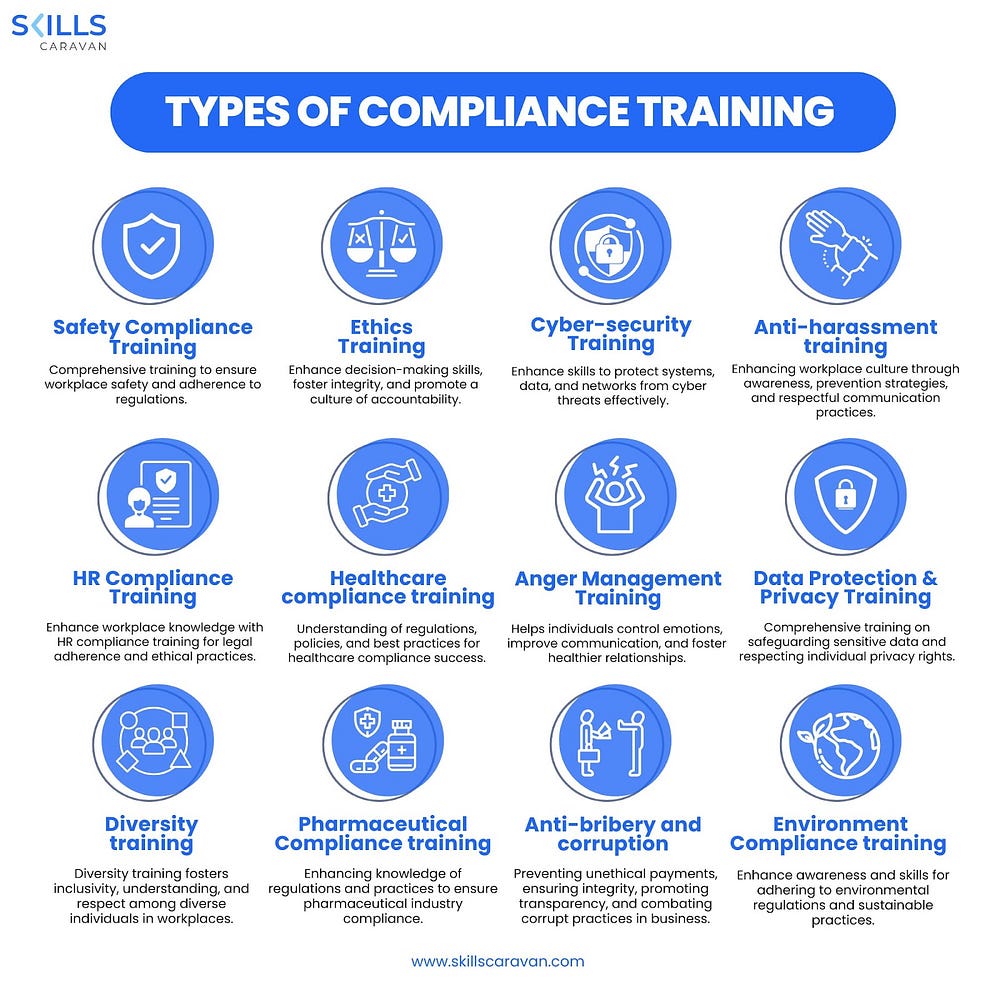How to Develop an Effective Compliance Training Strategy in 2025?
In today’s rapidly evolving business environment, developing an Effective Compliance Training Strategy has become more critical than ever. As we step into 2025, the expectations from compliance teams have grown — driven by stricter regulations, a more diverse workforce, and the increasing role of digital technologies. Whether you’re a compliance officer, HR professional, or L&D specialist, designing a training strategy that is engaging, measurable, and future-proof is essential.
Here’s a step-by-step guide on how to create an Effective Compliance Training Strategy tailored to your organization’s needs in 2025.

1️⃣ Understand the Compliance Landscape in 2025
Before building an Effective Compliance Training Strategy, it’s vital to understand what’s changed:
- Regulatory complexity: New laws covering data privacy, AI ethics, ESG reporting, and remote work compliance are emerging globally.
- Hybrid workforce: Many organizations now operate with remote, on-site, and gig workers — requiring training to be accessible and inclusive.
- Technological advances: AI, adaptive learning, and immersive technologies like VR and AR are shaping how compliance training is delivered.
Your strategy should begin by analyzing the specific compliance risks and legal requirements your business faces in this new context.
2️⃣ Set Clear Objectives
Every Effective Compliance Training Strategy must start with clear, measurable objectives. For 2025, your goals might include:
- Reducing policy violations by a set percentage.
- Increasing completion rates of compliance modules.
- Improving employee understanding through post-training assessments.
- Embedding compliance into daily decision-making rather than treating it as a checkbox exercise.
Objectives provide a benchmark to measure the success of your compliance training program.
3️⃣ Prioritize Risk-Based Training
A common pitfall is treating compliance training as one-size-fits-all. Instead, use a risk-based approach:
- Identify departments or roles facing higher compliance risks (e.g., sales teams, data handlers, finance).
- Create specialized modules addressing these risks.
- Align training topics with business priorities like cybersecurity, anti-bribery, diversity and inclusion, and AI ethics.
This approach ensures your Effective Compliance Training Strategy focuses resources where they’ll have the biggest impact.
4️⃣ Leverage Modern Learning Technologies
In 2025, technology is your strongest ally for building an Effective Compliance Training Strategy:
- Adaptive learning platforms: Customize content based on learner performance and role.
- Gamification: Use points, leaderboards, and scenario-based games to keep employees engaged.
- Microlearning: Deliver short, focused content that employees can access anytime.
- VR & AR simulations: Provide immersive training for high-risk scenarios like workplace safety or ethical dilemmas.
- AI-powered analytics: Gain insights into learner engagement, knowledge gaps, and predictive risk trends.
- By integrating these tools, you make compliance training more interactive, data-driven, and continuous.
5️⃣ Design Inclusive and Accessible Content
An Effective Compliance Training Strategy must cater to a diverse workforce:
- Use clear language and avoid jargon.
- Provide subtitles, voiceovers, and alternative text to make content accessible.
- Adapt content for different cultural contexts, especially for multinational teams.
- Offer flexible learning formats — from mobile learning to virtual classrooms.
Inclusive training increases participation and ensures no employee is left behind.
6️⃣ Make It Continuous, Not One-Off
Many organizations treat compliance training as an annual event. But an Effective Compliance Training Strategy for 2025 should make it a continuous journey:
- Introduce quarterly refreshers or micro-updates.
- Share regular compliance tips and real-life case studies via internal communication channels.
- Encourage ongoing discussions through workshops, team meetings, or digital forums.
Continuous training keeps compliance top of mind and helps adapt to evolving risks.
7️⃣ Measure, Analyze, and Improve
Measurement is key to refining your Effective Compliance Training Strategy:
- Track metrics like completion rates, assessment scores, and employee feedback.
- Analyze incident reports and compliance breaches before and after training.
- Use AI and analytics dashboards to identify patterns and risk areas.
These insights should feed into an annual or quarterly review of your training program, ensuring it stays relevant and impactful.
8️⃣ Build a Culture of Compliance
Even the best-designed Effective Compliance Training Strategy won’t work if compliance feels like a burden. Foster a culture where:
- Leaders actively participate and endorse compliance training.
- Employees feel safe to ask questions and report concerns.
- Compliance is tied to real-life decisions and business scenarios.
Making compliance a shared responsibility transforms training from an obligation into a business asset.
9️⃣ Adapt for the Future
Finally, remember that an Effective Compliance Training Strategy is not static. As new technologies like generative AI, quantum computing, and evolving regulatory frameworks emerge, your training strategy must:
- Stay aligned with upcoming regulations.
- Experiment with new learning technologies.
- Regularly gather employee input to improve training design.
Being agile ensures your strategy remains effective in the long run.
✅ Conclusion
Building an Effective Compliance Training Strategy in 2025 isn’t just about meeting legal requirements. It’s about creating a program that is risk-focused, inclusive, engaging, and continuously evolving. By combining modern learning technologies with a strong compliance culture and data-driven insights, organizations can turn compliance training into a true driver of ethical behavior and business success.
As compliance challenges grow more complex, investing in an Effective Compliance Training Strategy will protect your organization, empower your workforce, and build long-term resilience.

Comments
Post a Comment